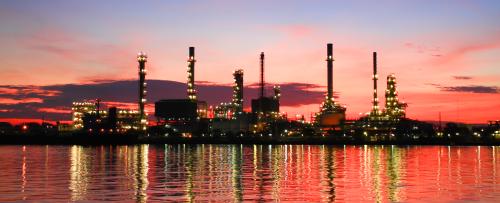This year, the EPA is poised to “reset” the Renewable Fuel Standard (RFS), which was passed in 2005 and expanded in 2007 to require increasing amounts of biofuels to be incorporated into U.S. gasoline and diesel supplies. Why the reset? The policy isn’t working: the ambitious volume targets set back in 2007 aren’t being met because they exceed the amount of biofuels the market can handle and are out of alignment with consumer demand. Over the years, the EPA has had to sharply reduce the volumes originally set by Congress and intervene nearly every year to waive them further. The promise of advanced biofuels, which Congress envisioned being the crux of the RFS, has come up short. What the RFS has become is a de-facto corn ethanol mandate — something Congress never intended.
Here are a few key things to know about the upcoming RFS reset:
1. Reset Proves the RFS Isn’t Working
Reset is happening because the U.S. is continually falling short of meeting RFS mandate targets. In fact, there hasn’t been a single year where the RFS has worked exactly as Congress envisioned. Technically speaking, reset was triggered at the end of 2018, when the volumes required for advanced, cellulosic and total renewable fuels fell short of statutory levels by at least 20 percent for consecutive years after 2016. As part of the reset, EPA is required by law to update biofuel targets for 2020 – 2022. The amounts the agency will require are anyone’s guess, but they will be considering costs to consumers, implications for energy security and overall economic impact when they make their determinations.
2. RFS Doesn’t “Sunset” After 2022
The RFS doesn’t expire in 2022. Even though reset will only cover up to the year 2022, the RFS doesn’t go away after that. Instead, EPA will take over, with authority to set RFS volumes at their own discretion starting in 2023.
3. The Blend Wall is Real
Under the RFS, the implied conventional (corn) ethanol mandate has been 15 billion gallons for the past several years. But that doesn’t mean refiners are blending 15 billion gallons of ethanol into gasoline. Closer to 14.3 billion gallons is blended. There’s simply not enough refining infrastructure, retail storage tanks and pumps, consumer demand or compatible vehicles to safely blend and consume the full 15 billion gallons (This limit to how much ethanol can actually be blended and consumed by the marketplace is often referred to as the “blend wall”). However, blend wall or not, refiners still have to comply with the law.
Once the blend wall is reached, refiners comply by purchasing appropriate volumes of biodiesel and blending that into diesel fuel instead. Reset is an opportunity to ground RFS volumes in reality.
4. Reset is a Time to Come to Terms with the Advanced Biofuel Flop
In 2007, Congress envisioned an RFS where advanced biofuels would account for the lion’s share of the mandate — 60 percent of the total RFS by 2022. We’re nowhere close, hence reset. Advanced biofuels, like those made from sugarcane, biogas, grasses, wood and algae, have yet to become viable. RFS mandates for cellulosic and advanced biofuels routinely exceed domestic production.
Advanced biofuels are also expensive. Biodiesel, for example, costs roughly $1.00 more per gallon than petroleum diesel and it packs less energy, meaning fewer miles per gallon. Whether purchased to satisfy the biodiesel mandate or as the “marginal compliance fuel” to satisfy the total renewable fuel mandate, blending expensive biodiesel into the petroleum diesel supply inflates the cost of diesel fuel for everyone.
5. The Status Quo is Failing
The only rational approach to reset is to lower total renewable fuel mandates and better align them with the blend wall and actual domestic production. Any suggestion that mandates should be maintained or increased ought to be a non-starter. Reset was triggered, after all, because volumes targets were unable to be met every year. Congress assumed many things in passing the RFS in 2007. Reset is an opportunity to fix those expectations and better align them with the reality of fuel consumption, domestic production and the blend wall.


